Train or bus or ferry or car?
Or maybe you should hop on a plane?
What is the best transportation in Europe — for you?
While I can’t say what is best for your trip to Europe without knowing exactly where you are going, I can give you some tips on how to figure out which mode of travel — or which modes — will work for you.
There are some things to consider.
And remember: You can mix it up.
So maybe trains or buses for a lot of the trip with a car rental just for those few days when you want a bit more freedom.
There are options.
So let’s take a look at this complicated and often overwhelming piece of planning your trip to Europe.
Some things to consider
What is your style of travel?
First of all, let’s talk about your style of travel.
No, I’m not talking about what you wear.
I’m talking about things like if you are a go with the flow type of traveler or if you want something more structured and planned.
Public transportation in some European countries may not run on time or be as plentiful, so you may have to alter your plans to suit the bus or train schedule.
If you are okay with not leaving at an exact time, then public transportation may be a great choice for you.
Of course, the country you are traveling in and around will also factor in as some countries have plentiful and efficient public transportation while others don’t.
If you are the type of traveler who wants a bit more control over when you go, where you go and the route you take getting there, then car rental might be a better option.
Think about the type of traveler you are so you can match your expectations with the type of transportation in Europe that is best.

Sometimes we want to travel quickly or at least with things planned out. Duomo and Campanile in Florence, Italy.

Sometimes we are more relaxed with our time and go with the flow more. Schlern near the town of Kasteluth, Alto Adige, Italy.
What is your budget?
Yes, car rental is typically more expensive once you factor in fuel costs and taking out insurance — which I strongly recommend.
Remember that fuel is about 4 times more in Europe than the US.
Bus travel is always inexpensive.
Yet it will take longer and sometimes your route isn’t direct.
But bus travel is definitely a way to save money.
Train travel can be less expensive but some routes and trains can be pricey.
Slower, regional trains are less expensive while the fast trains cost more.
So while it may seem that train travel is cheap, it’s not always the case.
But it is definitely environmentally friendly as is traveling by bus.
Do consider your budget as a piece of this complex puzzle when it comes to transportation.
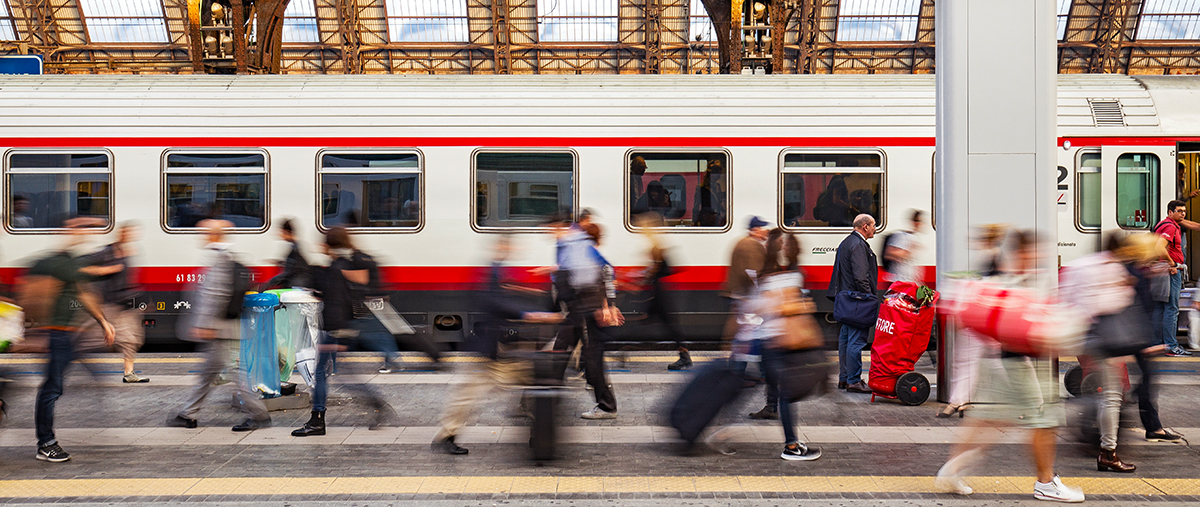
Public transportation in Europe can be very budget friendly. But do your homework to make sure! Photo courtesy of Pixabay.

Yours truly on a train in England. I love traveling by train when and where it makes sense for my trip.
How much time do you have?
I remember taking a bus from a small town in Spain, Vejer de la Frontera, to another small town — Ronda.
I had to first go to Cadiz, a larger town, change buses then go on.
It took a good half day to get there — at least 5 hours — as I remember waiting for around an hour at the Cadiz bus station before getting on the bus to Ronda.
The drive would have taken me just a bit over 2 hours.
But I was traveling frugally and had the time so I just accepted that getting from one small town to another would be time consuming.
And the experience of traveling with the locals was fun.
Trains can be faster especially if you opt for the faster trains.
You can get to Florence from Rome in about 2 hours.
However, you also have to look at train schedules as some routes have more frequent trains while others don’t.
Yeah, this can all make your head spin!
Remember: Time and money are your 2 resources.
Some folks are okay with spending more money so they have more time at their destinations.
Other travelers have more time and may want that local experience so they’re willing to go slow — and save some money.
Typically one resource will be more important to you than the other.
Just add this to the mix as you figure out the best transportation in Europe for you.

Getting to Ronda took some time by bus from Vejer de la Frontera. But it was very inexpensive!
Where are you traveling to and around?
This is very important to consider because some countries have far better public transportation than others.
And within countries, some cities or towns are easier to get to via public transportation than others.
So if you are going to Switzerland, you’ll be well served with trains and buses to most places.
Countries such as Germany, France, the Netherlands, Belgium and Austria have pretty good train and bus networks.
Ireland?
Not so much.
Romania?
They’re working on it.
If you are going to say, Italy, and sticking with Rome, Florence and Venice you won’t have an issue using trains.
But if you are going to Italy and want to visit small towns in Tuscany or Piedmont or Puglia, then you may struggle using trains and buses.
Trains won’t get you to the small towns, but buses will.
However, it may take longer and be more circuitous than if you were to drive a car.
I used trains and buses on my first couple of trips — Spain and Italy.
And I got by fine.
But as I realized there were towns or sites that weren’t so easy to get to, and as I found myself being on a bus or train and wanting to stop to “take a picture”, I realized that car rental was a better option for me when I was out in the countryside.
I do use trains for parts of my trip such as getting from Geneva, Switzerland to Verona, Italy.
No need for a car in those spots.
I picked up my car in Verona then made my way up into the Dolomites where I wanted more freedom.
I know this gets complex.
But where you are traveling needs to be taken into account as you figure out how to get from destination to destination.
All countries in Europe are not created equal when it comes to public transportation.
So all of these aspects need to be looked at as you consider transportation in Europe.
And if you are overwhelmed, then enlist the help a travel planner.
We are worth it!
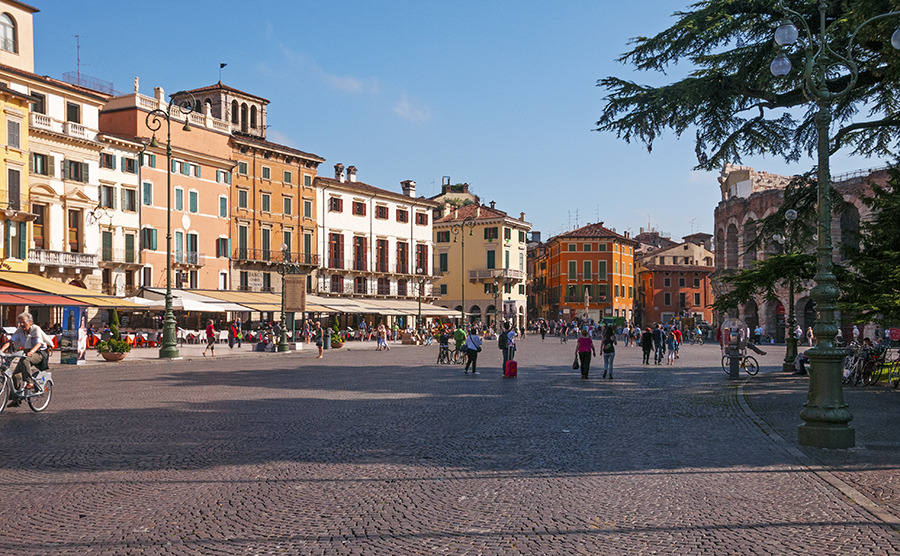
Training to cities like Verona, Venice, Florence, Rome and Milan is easy. I took a train from Geneva, Switzerland to Verona with a stop in Milan. It was an easy, relaxing and efficient way to get from city to city.
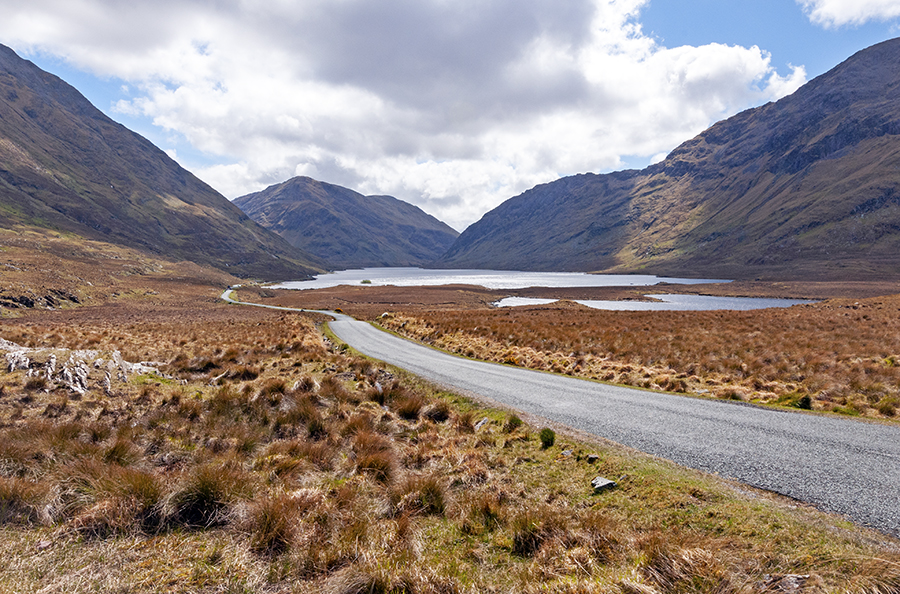
Ireland has a limited bus system and even more limited rail system. So renting a car is ideal if you want to get into the rural parts of this beautiful country.
Types of transportation
Trains
When people think of transportation in Europe, trains come to mind.
And some newbies to Europe travel think they can hop on a train and get anywhere.
But it doesn’t work this way.
As you read above the where you travel will factor in as to whether train travel is feasible.
Trains are a fabulous way to travel where they are available.
It’s easy to get from city to city or town to town — as long as they are on the train line.
For instance, training from Inverness, Scotland to Edinburgh, Scotland is easy.
From Edinburgh to York, England?
Yup easy.
York to London?
Absolutely.
But going from one small town in the Cotswolds of England to another via train?
Nope.
As for cost, trains can be cheaper than car rental but not always.
Train rides can be pricey or they can be very budget friendly.
Do consider the time of day as there are peak and off peak times.
And look at whether this is a high speed train or slower, regional train.
Slower, regional trains are always less expensive.
Again there is a lot to consider.
However I will say this: I do love traveling by train in Europe when I can.
I’ve taken trains from Milan to Paris, Geneva to Verona, Rome to Florence, Edinburgh to York to London, Dublin to Belfast, Venice to Vicenza, Florence to Lucca, Geneva to Grindlewald and quite a few more.
Trains are really one of best types of transportation in Europe.
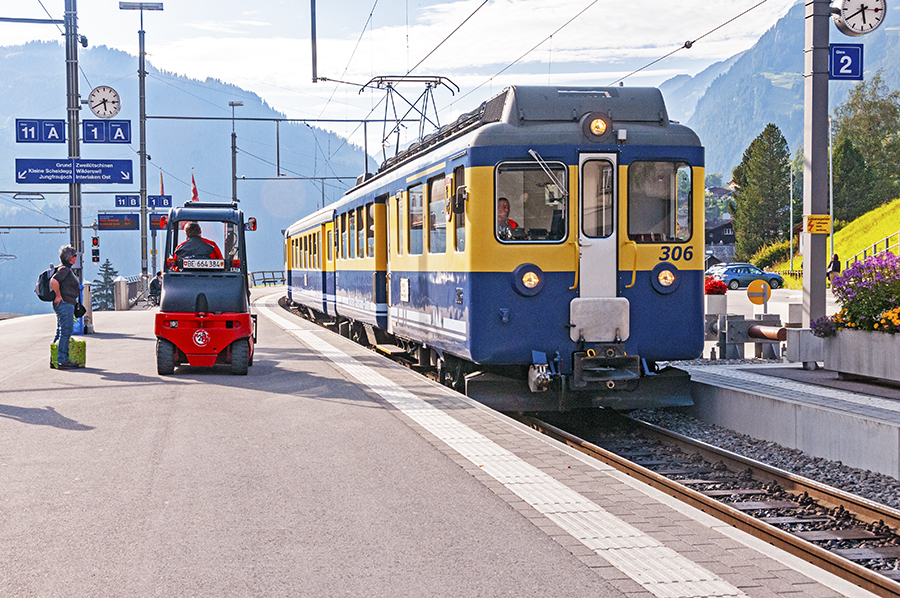
A small, regional train that I took from Interlaken, Switzerland to the small mountain town of Grindelwald. It was slow but very scenic!
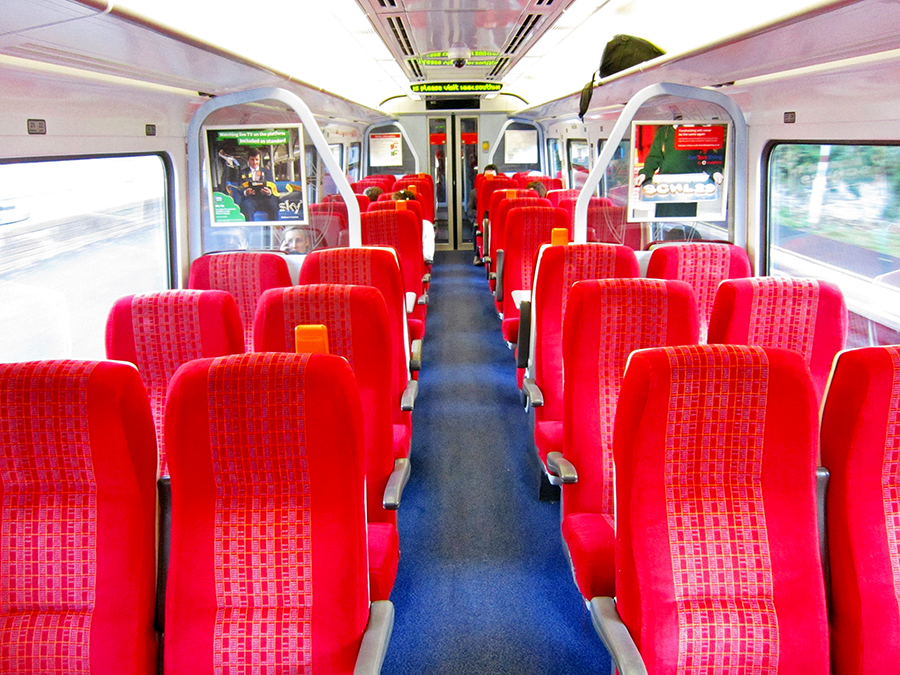
Trains are a great way to travel around Europe. Photo courtesy of Pixabay.
Buses
Buses fill in the gaps of the trains.
If you can’t get to a town by train, chances are you can get there by bus.
So maybe you train to a town then get on a bus to another nearby town not on the train line.
Buses are über budget friendly often costing just a few dollars or at least well under $20.
But you will need more time to take a bus.
You may also be more constrained on when you go as some routes may only run a few times per day.
However, it’s quite possible to get to smaller towns and wee villages via bus.
You just need to be open to the time.
For instance, when I was staying in Ronda, Spain which is a decent sized town, I wanted to make a day trip to a nearby little village called Zahara de la Frontera.
There was a very early bus over — about 7am.
And the bus that returned to Ronda wasn’t until about 3pm.
So I took that early bus over, before much was opened.
And I hung out in this little village for the day.
I could have spent just 2 to 3 hours there and that would have been enough time.
But I was there for about 6 hours.
I was stuck with the bus schedule.
I was okay with it.
However, it would have been nice to have arrived in Zahara de la Frontera around 9am and then to have left by noon and gone elsewhere.
But I made it work.
Buses are an essential part of public transportation in Europe.
They help you get to the smaller towns — but you have to have the time and be patient.
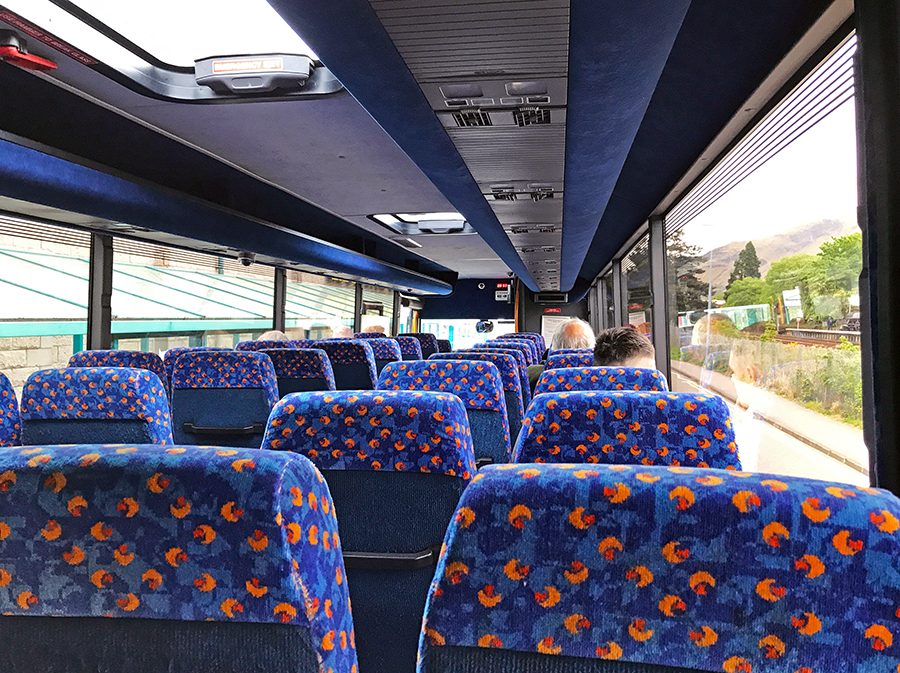
This is the bus I took from Fort William to Inverness, Scotland. It was about a 2 hour ride. It was cheap, had wifi and I found it quite relaxing to just kick back and enjoy the ride.
Ferries
If you are headed to a country with islands or are looking to go from say Ireland to Wales, a ferry can be a good option for you.
I personally took a ferry from Dublin, Ireland to Wales and then back.
It was easy, relaxing and was affordable at around €80 roundtrip.
Taking ferries can be fun.
This mode of transportation in Europe gets you out on the water and gives you a different perspective.
Ferries run around the Greek Island and the Croatian Islands.
You can ferry from Tallinn to Helsinki.
Or from England to France.
Taking a ferry may or may not be cheaper than flying.
You’ll have to research that.
Another thing to consider is time of year.
Some ferry routes only run at certain times of year — or at least have more frequent sailings at busy times of year versus quieter times.
So summer sees more sailings while winter sees less.
And if the seas are rough, ferries my cancel the sailing.
As for ferries being more environmentally friendly, this is a bit of debate as it may depend on the ferry.
Some high speed ferries use a lot of fuel — more than an airplane.
It’s definitely worth doing a bit of homework on both cost to your wallet and to the environment.
However, there are destinations where ferry may be the only way to get there.
If so, simply enjoy it.
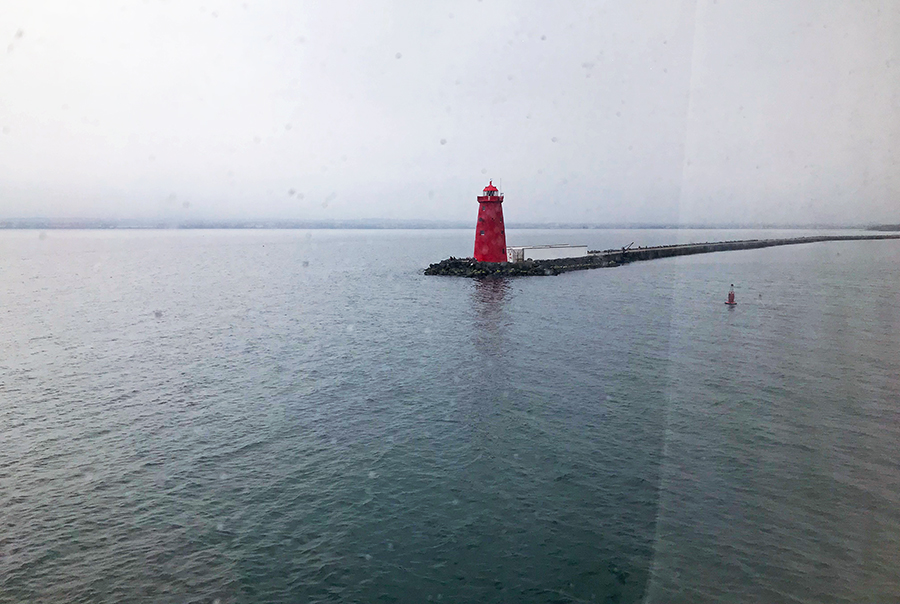
A lighthouse in the Dublin Harbor as I ferried to Ireland from Wales. Ferries can be a good way to get to islands or even between countries.
Car rental
Hiring a car can be a good option for your trip to Europe.
And yes, it can be the easiest way to get from place to place — especially in more rural areas.
Public transportation in Europe can confuse those of us who are so married to our cars for getting around.
But I don’t think car rental should be the first option.
I do think all the above aspects of your trip should be considered before settling on renting a car.
However I will tell you that I typically recommend car hire to my travel clients who are going to Ireland.
This is simply because I know it is much easier to get around Ireland — to the small towns and villages — with a car.
As I’ve mentioned above, I’ve mixed up my transportation in Europe using trains, buses, ferries and renting a car.
Most of us will be in bigger cities for at least part of a trip where we don’t need or want a car.
So please don’t have a car in London or Berlin or Madrid.
You don’t want it and it will just cause you stress.
For the traveler who wants to get into more rural and off the tourist trail spots, then car rental is a good option.
I always recommend hiring the smallest car you can and to drive a manual transmission if you are able.
Both of these save you money.
Plus roads can be smaller in parts of Europe so a smaller car is better.
Remember: Pack light!
Car hire is also good if you have 3 or 4 people.
This can help with the cost and is more environmentally friendly.
And if you have 2 people as drivers, then all the driving doesn’t fall to one person.
I have to admit that as a solo traveler, I often feel guilty renting a car.
But if you are a regular reader of this blog, then you know that I love getting into off the tourist track places and into nature.
To help myself feel better, I rent a manual transmission, the smallest car possible and don’t drive if I can walk.
And I try not to have a car in places where I really don’t need it — like a larger city or town.
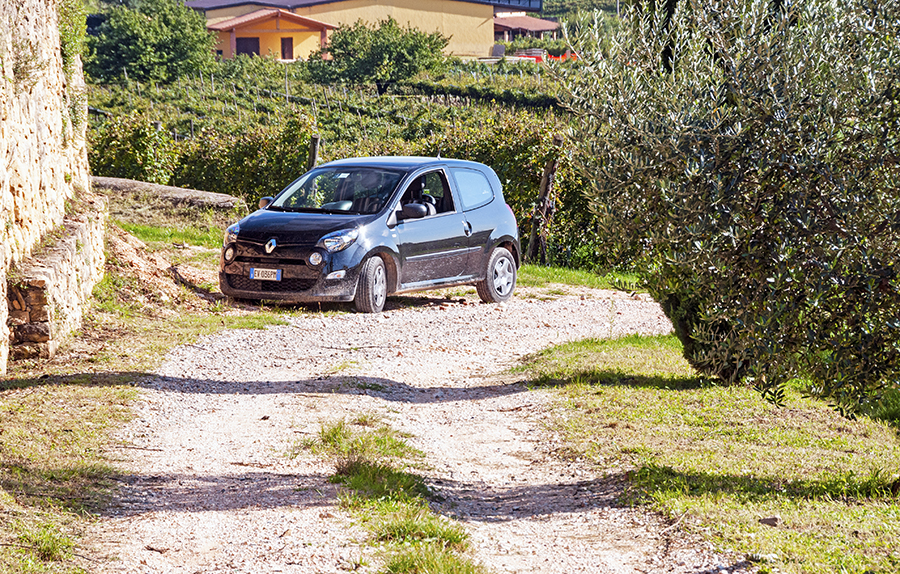
Having a car in the Valpolicella wine region of the Veneto region of Italy made it easy to visit vineyards and to stop and photograph when I wanted.
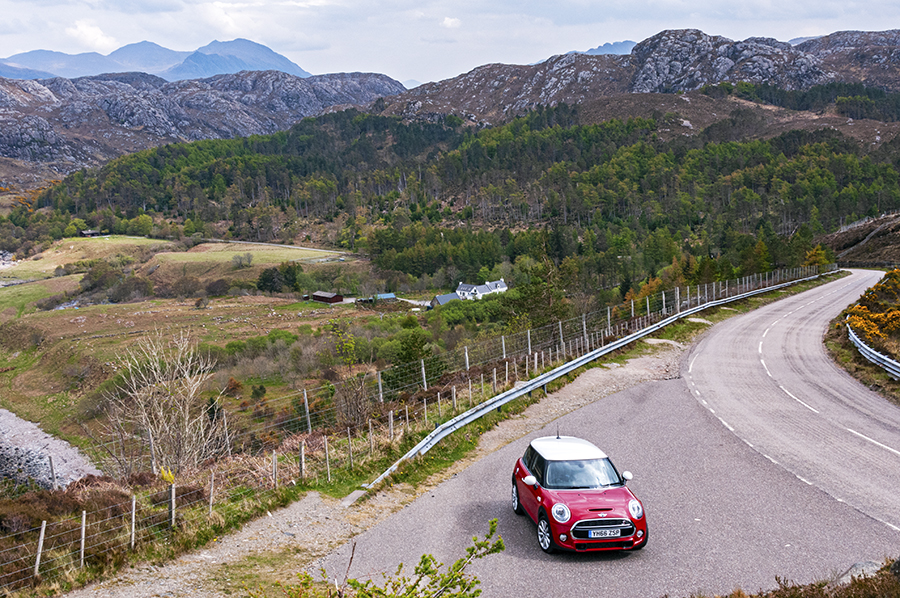
In order to get to and really experience the Northwest part of Scotland, I needed to have a car.
Airplane
I want to finish with air travel.
Sometimes taking a flight from Amsterdam to Zurich will make more sense.
I took a train from Milan to Paris.
Yes, I could have flown in less time.
But I wanted to experience a long train ride and I had the time to do it.
It probably would have been the same amount of time had I opted to fly.
When it comes to air travel, sometimes it will be the only way that makes sense such as getting from Munich to London or Madrid to Rome.
However, there are times when it’s a bit of a coin toss and you could either take a flight or take the train.
Look at the time it takes for both, taking into account the time you need at the airport ahead of your flight.
And check the prices.
Factor in if you need to get from the airport into the city.
Typically train stations are a bit more centralized so taking a bus or taxi to your accommodation may not be necessary.
Low cost flights within Europe can be tempting.
Make sure to look at the total cost of the flight with bags and seat selection (if you want this).
Do your homework so you can truly see the final cost and the time.
Then you can make an informed decision.
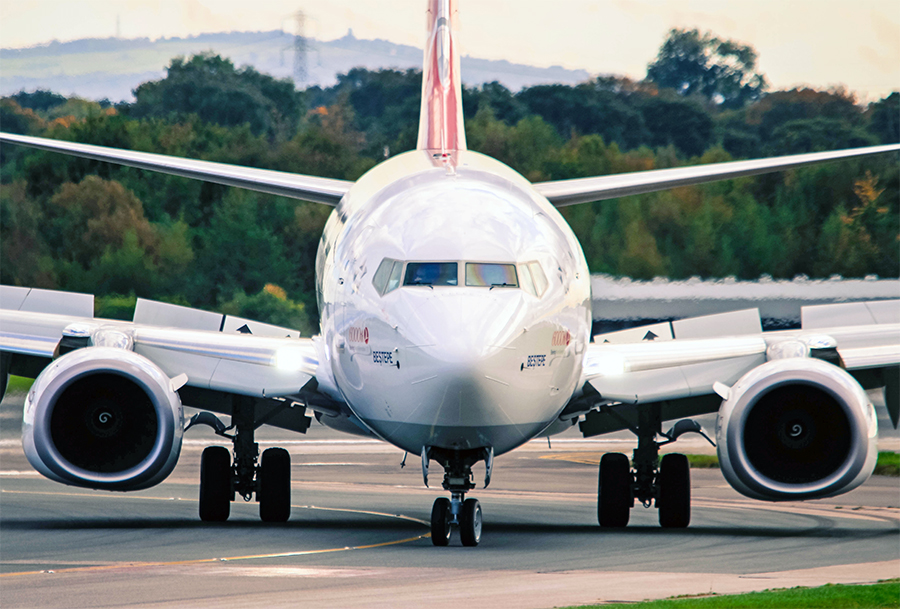
Sometimes taking a flight is the best transportation option for your travel in Europe. Just look at total costs and time. Photo courtesy of Pixabay.
So what’s the best transportation in Europe — for you?
As I said, it’s difficult to say what is the best transportation in Europe until you take into account all the different aspects of your trip and your personality.
I’m a fan of all modes of transportation.
And I’ve traveled within Europe via all the above ways — including walking!
Use this post as a guideline and remember to consider all forms of transportation — even in one trip.
You may need to meld these together to make your trip come together.
And if you are unsure, then I highly recommend using a travel advisor to assist you.
While you may not be traveling just yet, you will be able to soon enough.
So now you have the information you need to put the transportation piece of the puzzle in place.
Good luck!
Want more tips on planning your trip to Europe? Then check out my guide on Europe Travel Planning!
Please note that Wander Your Way does not recommend travel at this time due to the current global health situation with the COVID-19 pandemic. Furthermore, many destinations and attractions found on this website will not be operating although some places are slowly opening up. Please stay up to date using official sources like the WHO and CDC. I do plan to continue to write about incredible destinations and to offer tips on travel to Europe, so that you will find some solace in these posts — so you dream about travel and learn about travel. This way when we can all travel again, you’ll be ready to go! For now, stay home, or close to home, and stay safe!
Disclaimer: This post contains affiliate links. This means I will earn a commission – at no extra cost to you — if you click on the link and purchase anything from these trusted companies. It helps Wander Your Way, a small business, stay in business. Thanks for your support!
Like it? Pin it!
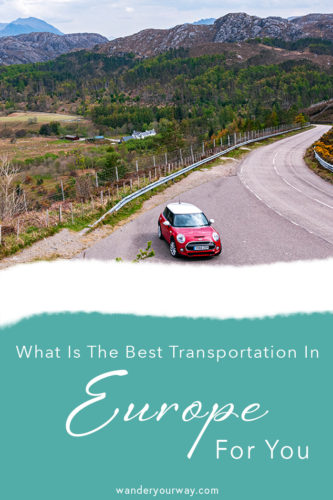
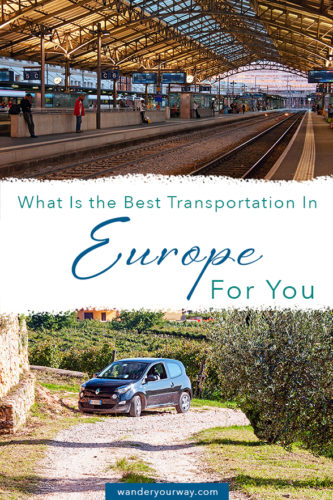
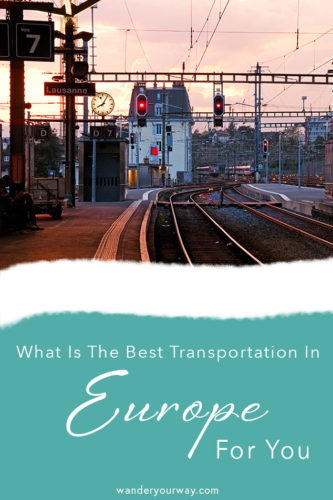








This is a really fascinating guide and not something I’ve really considered when travelling before. Being from the UK, if I ever visit Europe I’ll typically just fly directly to the city I want to visit for a few days then fly back again. Because of the convenience, I’ve never looked into extending our stay and using public transport to visit other places. It’s a great idea though and You’ve got me planning an extended European break! Thanks for the inspiration!
You’re welcome and thanks for the compliment. With you being so close, I’m sure it’s easy to just do those city breaks. But when you want to go to Europe longer, and explore more, then you’ll definitely need more than a flight.
This is a great post, packed with helpful information. The trains in Europe are so easy and efficient and amazing for us, coming from the US. I’ve used buses only in a city. I guess trains went everywhere I’ve wanted to go so far. Or we rented a car for Normandy and the German countryside. I can’t wait to ride the trains in Europe again!
The trains do hit a lot of the main cities. I tend to go a bit more to lesser known spots and love to get out in nature, so I’ve had to use buses and rent a car. I’m with you, Sharon — I can’t wait to ride trains in Europe again!!